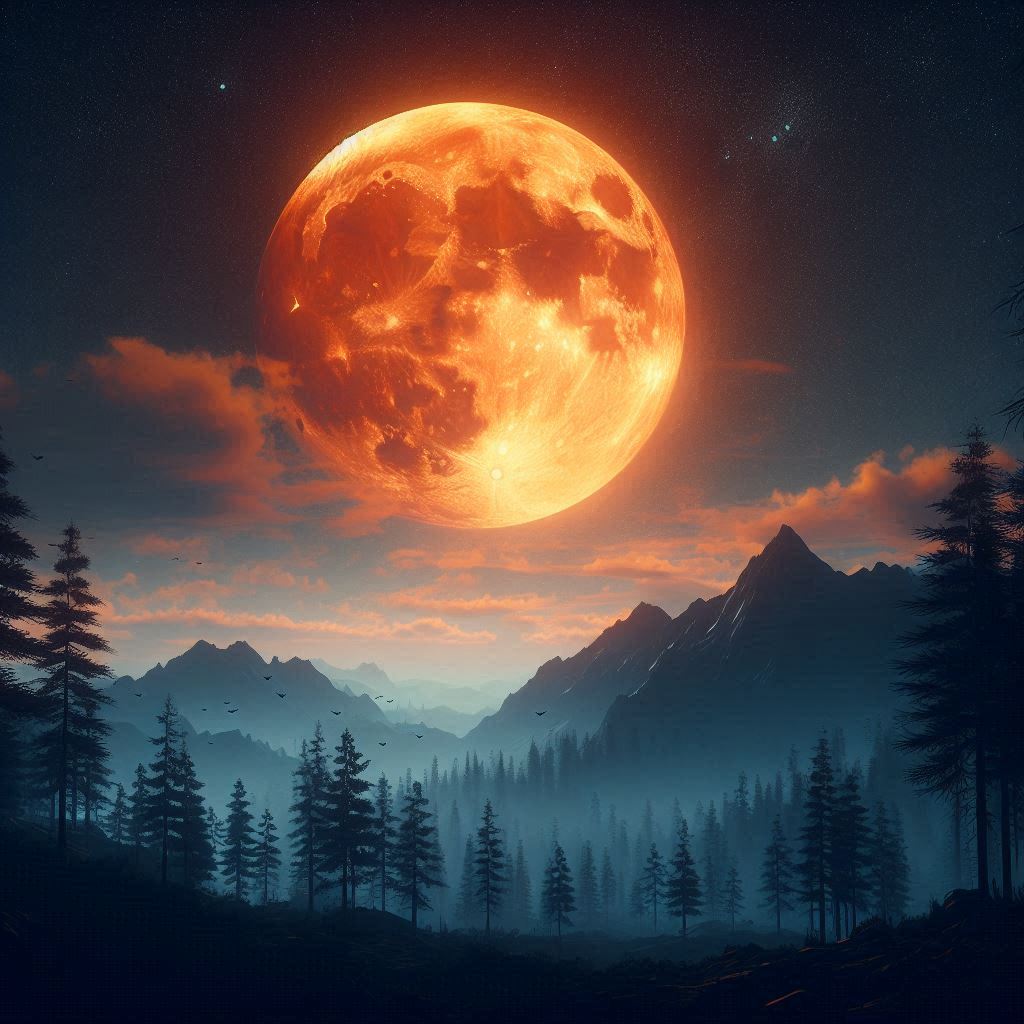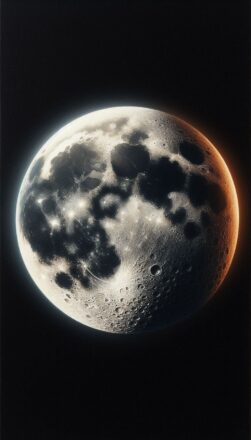- Empty cart.
- Continue Shopping
The Hunter’s Moon: A Journey Through Ancient Skies and Modern Mystique

In the crisp autumn air, when the leaves have turned brilliant shades of red and gold, and the chill whispers of winter are on the horizon, there’s one celestial event that never fails to capture our imagination—the Hunter’s Moon. It’s more than just a full moon; it’s a time-honored tradition, a signal to our ancestors, and a mystical marker in the night sky that has inspired stories, legends, and survival strategies for centuries.
But what makes this moon so special? Let’s embark on a journey through the ages to uncover the magic and history of the Hunter’s Moon.
The Origin of the Hunter’s Moon
Long before cities and streetlights, the moon was a guide for the people who lived in tune with nature’s rhythms. The Hunter’s Moon follows the Harvest Moon, typically appearing in October, sometimes slipping into early November. While the Harvest Moon helped farmers gather crops under its bright light, the Hunter’s Moon had a very different purpose.
As the fields were cleared and the harvest was stored away, the animals of the forest, fields, and plains grew fat in preparation for winter. For ancient hunters, this was the prime time to gather food for the cold months ahead. With the crops gone and the underbrush thinning, the open landscapes made it easier to spot game. The bright moonlight, shining almost as brilliantly as day, allowed them to hunt deep into the night, maximizing their efforts before the harsher conditions set in.
This moon earned its name because it was the hunter’s ally, a celestial spotlight illuminating the path toward survival.
The Science Behind the Glow
What makes the Hunter’s Moon so mesmerizing isn’t just its historical significance but also the way it lights up the sky. Unlike other full moons, which rise about 50 minutes later each night, the Hunter’s Moon rises only about 30 minutes after sunset for a few consecutive nights. This creates an extended period of bright moonlight in the early evening, a phenomenon known as “moon tide.”
Imagine it: the moon rises quickly after the sun dips below the horizon, its light bathing the land in a soft, silvery glow. For several nights, it creates an ethereal twilight, making the Hunter’s Moon seem even larger and more golden as it hovers low on the horizon. This unique brightness has long been associated with autumn’s quieter, darker days, creating a stark contrast against the lengthening shadows.
A Time of Legends and Stories
The Hunter’s Moon isn’t just a practical tool for survival—it’s also steeped in legend. In many cultures, this moon was seen as a time of heightened energy, transformation, and connection to the spirit world. For Native American tribes, it was a time to gather food and prepare for the challenges ahead. Some called it the Blood Moon due to the increased hunting and preparation for the scarcity of winter.
In medieval Europe, the Hunter’s Moon was sometimes viewed as an ominous sign, a reminder of the harshness of the coming months. Wolves would howl in the distance, and the cold air carried a sense of urgency. The moon’s brilliance was seen as both a blessing and a warning: use this light well, for soon it would fade, leaving only the harsh bite of winter’s breath.
In other cultures, the Hunter’s Moon was a moon of celebration—a time to gather with loved ones, feast, and give thanks for the bounty of the year. Under the glow of the Hunter’s Moon, communities would come together, sharing stories around fires and watching the shadows dance under the pale light.
Modern Mystique: The Hunter’s Moon Today
In today’s fast-paced, technology-driven world, we often forget to look up at the night sky, but the Hunter’s Moon is hard to ignore. Whether you’re a skywatcher, a photographer, or love the changing seasons, this moon has a magnetic pull. Its brightness and beauty make it a favorite for photographers who love capturing the glowing orb as it rises over the autumnal landscape.
And for those who enjoy a bit of stargazing, the Hunter’s Moon provides the perfect backdrop for late-night outdoor adventures. Whether it’s a hike under the moonlight, a cozy bonfire with friends, or just a quiet moment to reflect, the Hunter’s Moon has a way of connecting us to the ancient rhythms of nature.
Fun Facts About the Hunter’s Moon
Not Always in October: While most often in October, the Hunter’s Moon can occasionally fall in early November, depending on the timing of the equinox and the full moons.
Brighter than Usual: Due to the shorter time between moonrises, the Hunter’s Moon appears brighter and larger than most full moons, especially when it’s close to the horizon.
Golden Glow: The low angle of the moon in autumn makes it appear more golden or reddish as it rises, adding to its mystical appeal.
Celebrated Around the World: Many cultures celebrate the Hunter’s Moon with festivals, particularly in East Asia, where it coincides with harvest festivals that honor the moon’s significance in agricultural cycles.
A Moon of Reflection
While we may no longer need the Hunter’s Moon to survive the winter, its presence in the sky still carries a deep significance. It’s a reminder of the changing seasons, the cycles of nature, and our connection to the world around us. Whether you see it as a symbol of preparation, celebration, or reflection, the Hunter’s Moon continues to captivate us, generation after generation.
So next time it rises, take a moment to step outside, look up, and let its ancient glow wash over you. In the light of the Hunter’s Moon, we’re all connected—past, present, and future, under one sky.



1
гарантия при продаже аккаунтов безопасная сделка аккаунтов
покупка аккаунтов покупка аккаунтов
магазин аккаунтов https://magazin-akkauntov-online.ru/
услуги по продаже аккаунтов маркетплейс для реселлеров
магазин аккаунтов социальных сетей купить аккаунт
маркетплейс аккаунтов https://kupit-akkaunt-top.ru/
площадка для продажи аккаунтов купить аккаунт
Marketplace for Ready-Made Accounts https://accountsmarketplacepro.com/
Gaming account marketplace Account Exchange Service
Website for Buying Accounts Secure Account Sales
магазин аккаунтов https://akkaunt-magazin.online/
Prepare confidently for your exam with P_BTPA_2408 PDF Dumps – your ultimate resource for success. Our expertly compiled dumps cover all key topics, ensuring you grasp every concept with ease. Designed for clarity and accuracy, these dumps mirror the real https://www.dumpstool.com/P_BTPA_2408-exam.html exam format to help you practice effectively. Download now and boost your chances of passing on the first attempt. Stay ahead with verified, up-to-date content and make your certification journey smooth and stress-free. Get ready to succeed today!